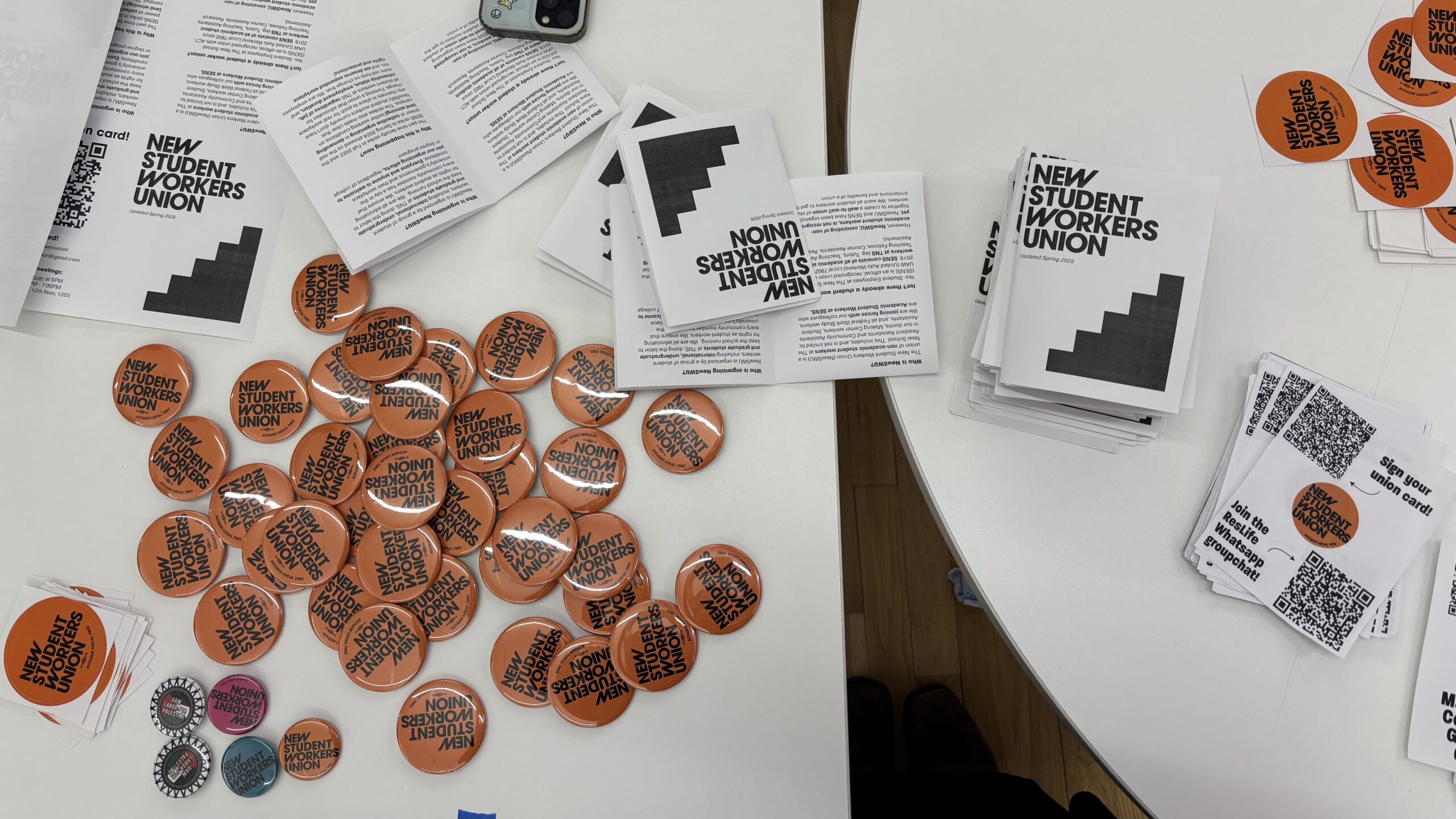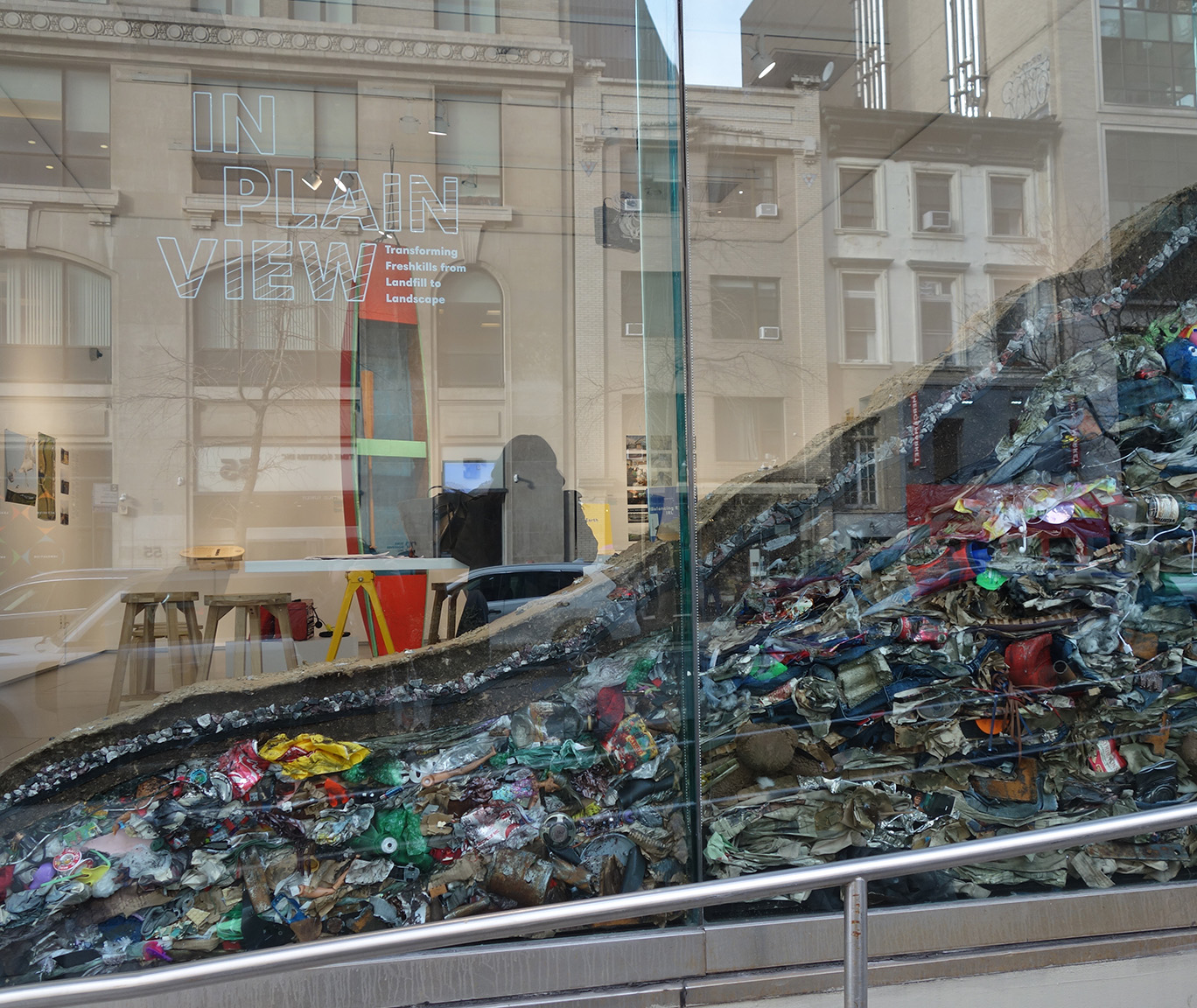Welcome to Writes & Bites — a series where Creative Writing MFA student Arianna Gundlach periodically reviews a place in New York City you could write at and tackles a writing topic that has been weighing on your mind. This week we look at writing aboard an Amtrak train departing from Moynihan Train Hall.
Hello, refreshed readers and writers. I’ve been expecting you.
Welcome back from winter break! I hope the spring semester is treating you well so far. But if it’s not, don’t be disheartened, there’s still plenty of time to turn it around. For the time being, you can rely on Writes & Bites for your writing spot recommendations in New York City with a side of helpful writing advice.
Some of you most likely took an Amtrak train home for break, and if you’re lucky to live in neighboring states, you might even take the train home on weekends. The train isn’t just good for affordable, comfortable travel; it’s also a convenient mobile writing spot with a dose of scenic inspiration. Something you writers should take full advantage of.
If you’re taking an Amtrak train from New York City, you’ll be departing from Moynihan Train Hall at Penn Station — the home of Amtrak and the Long Island Rail Road since 2021. Moynihan is easily accessible via the A/C/1/2/3; these subway lines connect directly to the train hall without you ever needing to step outside. Just follow the appropriate signs. Amtrak recommends travelers arrive one hour before their departure time, but 30 minutes is probably fine for a pro. However, a full hour gives you time to partake in all that Moynihan has to offer.
The main concourse level consists of a large atrium with a gridded glass ceiling and a hanging gray clock. Large track markers (7-16) and descending escalators break up the space. Moynihan has great signage with arrows directing you to wherever and whatever you need. There are digital screens everywhere (including the waiting room) with train departures and track numbers as they’re announced. When your train is boarding, it will also be announced on the loudspeaker.
There is no lounge seating in the atrium, so you can instead find a seat in the ticketed waiting room (Amtrak and LIRR customers only), the Food Hall, or the Amtrak Metropolitan Lounge on the next level (Amtrak Guest Rewards Select Executive and Select Plus members only). I’d recommend getting a high table or booth at the Food Hall if you’re itching to start writing. There’ll be far more interesting dialogue to eavesdrop on and character interactions to observe here before you get on the train. You might even stumble upon a new story idea or a real-life reference for your next protagonist, so keep an eye out.
There are numerous options for refreshments to enjoy before your train or to take aboard. After all, writing on an empty stomach can be disincentivizing. Here are some options that are worth your time.
Birch Coffee in the atrium has all your favorite caffeinated staples and baked goods with prices slightly cheaper than Starbucks (also at Moynihan). If you’re looking for a café with more drink specialties try Blue Bottle Coffee by the Ninth Avenue exit or Cha Cha Matcha near the Food Hall. Both are a little sparse on baked goods, but don’t worry, there’s places for that too.
Petite Maman in the Food Hall will catch your eye for sure with its blooming white rose foliage. It has an extensive food (quick bites and meals) and beverage selection and a well curated two-tiered display case of sweet and savory delights. For bar seating and a cocktail (alcoholic/nonalcoholic) try The Irish Exit in the center of the Food Hall. It even has an old-school flip-disc display that rapidly cycles through a series of fun facts.
The place you don’t want to skip above all else is Magnolia Bakery in the atrium. They have the most tantalizing cases of goodies by far. The shop is overflowing with cookies, brownies, cakes, cupcakes, and their signature banana pudding. They also have coffee and espresso drinks as well as tea and lemonade. The intoxicating sweet smell might make you never want to leave. Be careful not to miss your train.
And like any good transportation hub, Moynihan has Gothic News, which sells all your travel essentials from snacks and drinks to magazines and neck pillows. They even have a shelf of books from The Strand with a “buy two, get one free” sale.
When your track number is announced, you’ll proceed to the corresponding escalator and make your way down as boarding commences. I’ve personally taken the Northeast Regional Train, so that’s what I’ll be using as my reference point. You’ll most likely be in Coach, but you can also opt for the Quiet Car (if you’re really dedicated) which is the second to last on the Northeast Regional Train. Business class is the last car, and the Café Car is in the middle — if you can figure out where that is.
Even though there’s no assigned seats in Coach, be careful where you sit. Surprisingly not all “window seats” guarantee you an actual window. The pattern goes window, wall, window, wall — so about half the people in the car get stuck with a sliver of wall for their view. Not very inspiring.
Aboard the train are two 120 volt, three-prong outlets on the window seat side, which are optimal for laptop charging. However, there are no USB outlets, and the outlet placement is inconvenient if you have an aisle seat. I still prefer bringing a portable charger. Your reclinable seat also comes with a tray table and a seatback pocket in front of you, similar to being on an airplane. But if you secure your personal item underneath your seat, you’ll have more legroom than in the main cabin on an airplane. There’s free Wi-Fi, so you can write on or offline and still have access to a dictionary for the word just on the tip of your tongue or a thesaurus for all your inevitable synonym needs.
If you’re lucky, you’ll have a pair of seats to yourself. But I would advise not putting your coat or personal item in the free seat until after the train departs. And be mindful during intermediate stops that someone may need it more than you do. *Side eye* Don’t be that person — you know who you are.
Once you’re settled, let the scenic ride and gentle hum of the train charge you with creativity. Moving through snow-covered trees and frozen lakes under an endless sky pairs well with writing toward your character’s triumphs and pitfalls. The sights can only bode well for your imaginative mind, sparking new settings and sensory details. Looking out the window might even convince you to take up “window gazing” as a hobby — especially while you’re listening to cinematic music and fully convinced you’re the main character of the moment. It’s truly magical. And what’s better than a main character moment when you’re writing?
Although the ride isn’t always smooth. You’ll still get jostled and shifted a little from side to side, triggering some motion sickness if you’re susceptible. During winter travel when there’s ice on the tracks, there can also be unexpected stops. Sometimes the scenery is almost fantastical, and other times it’s New Jersey. There are highs and lows. Just like the steady plotting and pacing in a good book — something us writers can learn from.
As an Amtrak customer, you want to arrive at your destination in the estimated time, and you want the stops in between to be predictable, or at least convenient. This makes the journey accessible and even enjoyable. Readers want the same from their books, and solid plotting and pacing are the key to guaranteeing this pleasurable journey. However, the twists and turns in a book don’t have to be predictable; they just have to believably fall into place along the arc of events in a timely manner. How to do that exactly is the question.
As a refresher, plotting is your actions and events, while pacing is the cadence at which these actions and events are occurring. Frankly, I still struggle with plotting and pacing; I consider them the most challenging parts of writing a long-term project. This challenge reminds me that I’m always learning and growing as a writer; there’s still more tips and tricks to absorb and master. But I’m not one to “gatekeep,” so here’s what I’ve learned so far.
You want your plotting to be intentional with a clear purpose, and you want your pacing to be in the sweet spot between dragging and rushing. Your readers can be productively frustrated by delayed actions or withheld information, but they shouldn’t be actually frustrated to the point where they’re considering putting down your book.
The best craft book for plotting and pacing that I’ve come across is “Save the Cat! Writes a Novel” by Jessica Brody, or the variation “Save the Cat! Writes a Young Adult Novel,” if you’re a YA writer like me (let’s be friends!) Writers can usually be divided into plotters or pantsers: those who meticulously plan and outline or simply write by the seat of their pants. No matter how you identify, Brody’s books provide excellent touchstones and structural markers.
Before you’re off to the races with your plot, your protagonist needs the following three things: a problem (or a flaw that needs fixing), a want (or a tangible goal), and a need (a life lesson to be learned). By establishing these three qualities in advance, you can check in after each chapter to see how they’re progressing and in turn how your protagonist’s transformation is coming along. Transformation is crucial. If your character’s problem isn’t being overcome or they’re not making strides toward their goal or their real need still isn’t being realized, it may be time to reevaluate your plotting and pacing. So use these three as your character check-ins to aid in your structural storytelling.
While you don’t have to plan every part of your plot, Brody advises at least thinking about the five foundation beats, which can change the course of your story. These beats are (1) the Catalyst, (2) Break into Act 2, (3) the Midpoint, (4) All is Lost, and (5) Break Into Act 3. The Catalyst, also known as the inciting incident, is what gets the protagonist started on their journey. Like when Harry Potter finally receives (and gets to read) his acceptance letter to Hogwarts. Break into Act 2 is when the protagonist leaves their status quo behind and starts something new (Harry arriving at Hogwarts). The Midpoint is typically either a victory or a loss — raising the stakes of your story. All is Lost will be the lowest point for your protagonist. And lastly, Break Into Act 3 leads your protagonist to fix things the right way (linked to their need) after a realization, rather than the wrong way (linked to their want) they were attempting in Act 2.
Use these beats as your guideposts, even if you’re writing into the unknown. For you pantsers, writing toward exciting events (whether they’re foundation beats or not) will help maintain your momentum. Stakes, risks, and deadlines all keep your pacing tight, too. Allow for rest and reaction time between your exciting highs and devastating lows, otherwise your pacing may end up too fast. If things start to plateau, try moving something you meant to happen later to happen now.
Writing aboard an Amtrak train isn’t something you seek out but rather an opportunity that presents itself. So when you find yourself on one, take advantage of your time. Finish off your goodie from Magnolia Bakery and sink your teeth into the five foundation beats of your story. Really get to know the arc of events and the arc of your protagonist (problem, want, and need) — with those in mind, it’s full steam ahead.
Moynihan Train Hall
421 Eighth Ave.
https://moynihantrainhall.nyc/
| Commute 21 minutes from the UC via subway (1/2/3). | Hours Daily 5 a.m.-1 a.m. |
| Tech Two three-prong outlets on window seat side. No USB. Free Wi-Fi. Add your Amtrak ticket to your mobile wallet for easy access. | Layout (Northeast Regional) No assigned seats in Coach. Café Car is in the middle. Quiet Car is second to last car. Business Class is rear car. |
| Gems Magnolia Bakery (Moynihan); Food Hall (Moynihan); ticketed waiting room (Moynihan); scenic ride; extended legroom; seatback amenities; student discount for Amtrak. | Noise Level Relatively noisy (Moynihan) Relatively quiet (aboard Amtrak) |
| Be Aware Two carry-ons (50 lbs) and one personal item (25 lbs) permitted per person. Not all “window seats” have an actual window. Outlets are inconvenient to reach for those in aisle seats. | Rating 3/4 Stars – based on New York Times star system: “ratings range from zero to four stars. Zero is poor, fair or satisfactory. One star, good. Two stars, very good. Three stars, excellent. Four stars, extraordinary.” |








Leave a Reply